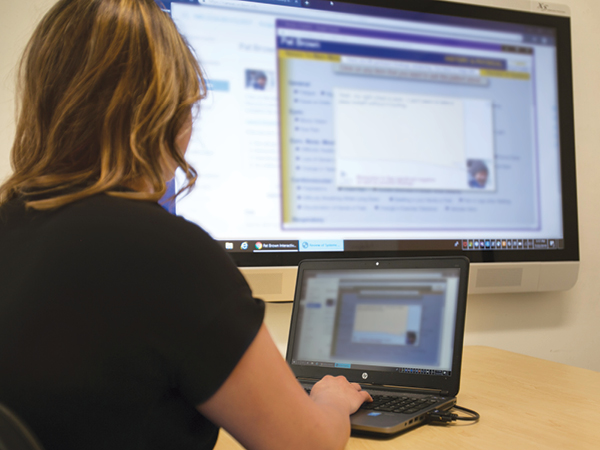
Trials before errors
How virtual patients promote critical thinking success
Before any new drug enters the marketplace, researchers conduct clinical trials. Early phases find out whether drugs do what they’re expected to do. Later stages involve hundreds of people and compare the safety and effectiveness of the new treatment against current options.
The process is the same for staff and faculty at the Betty Irene Moore School of Nursing at UC Davis, inventing new ways for health sciences students to learn. Computer technology opens a new medium for problem-based learning. Computer-based simulations of clinical experiences, known as virtual patients, offer promise as an instructional tool for future family nurse practitioners and physician assistants.
“This pilot study was a way for us to figure out what students are thinking during this patient interaction and how that initial thinking takes them down a path, be it the right one or the wrong one,” explains Andrew Corbett, the school’s instructional innovation specialist who collaborates with faculty to design and deploy rich interactive learning experiences. “Computers give us the ability to automatically capture fine-grained data on students’ actions and choices while engaging with the virtual patient.”
For the pilot study, Corbett developed interactive online modules using The Experience API, an e-learning industry standard that makes it possible to collect detailed data on a student’s choices within the modules. The modules begin with the student conducting a simulated history and physical with a patient. This is followed by a branching scenario that challenges students to make diagnostic and treatment decisions based on the information gathered in the history and physical.
“Learning analytics generated from our virtual patient scenarios revealed two distinct groups of students,” Corbett explains. “A larger group that consistently identified critical pertinent findings and made correct clinical decisions and a smaller group that was less successful at these tasks.”
Just like in the drug research described above, the virtual patient scenarios show promise in assessing student clinical reasoning and justify further research.
“As an educator, I need tools and ways of knowing where students’ clinical reasoning goes astray. A multiple-choice exam doesn’t cut it,” adds Elizabeth Rice, associate dean for student and faculty success. “By using technology this way, faculty have a better idea earlier in students’ education where students’ reasoning may be flawed. We can intervene sooner to get challenged students on the right path.”
While it’s premature for the School of Nursing faculty to revamp their curricula based on this pilot study, the project creators say the results offer great promise. Future studies on validated collections of virtual patients should yield valuable insights into clinical reasoning skills. That will inform how educators teach and, ultimately, improve student success.

